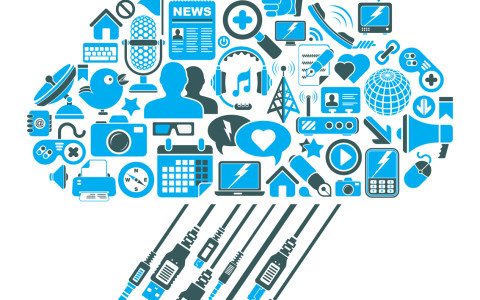
The term ‘cloud’ has been floating around everywhere these days. As computers and mobile devices become more of an integral part of our daily lives, the cloud is becoming increasingly important whether we understand it or not. Devices like the Google Chromebook operates solely off cloud-based services. Microsoft is moving its flagship software to the cloud in Office 365. All of my cell phone content lives in some intangible world, accessible from a number of devices at any time.
So what does the move to the cloud mean for me and my restaurant?
To get a baseline knowledge, let’s start by defining what the ‘cloud’ is. A quick reference to Wikipedia defines cloud computing as computing that involves a large number of computers connected through a communication network such as the Internet, similar to utility computing. In science, cloud computing is a synonym for distributed computing over a network, and means the ability to run a program or application on many connected computers at the same time.
In short, cloud computing means that your data; be it contacts, spreadsheets, slide decks, or menu databases, live on a server hosted on the Internet at a remote location. It’s called ‘the cloud’ because all you have to do is direct your browser or device to a certain URL, and you have access to all of your information. You could be on your work PC, your phone, your tablet, at a computer in the library, your friend’s computer, or any Internet-enabled device and have access to your information. All you need is a login and password.
Since we now all know what the cloud is, how does it play for your restaurant?
There are a number of relevant applications for cloud computing in the restaurant space. One of the most relevant for restaurateurs (and one of the most valuable) is the accessibility to sales and labor reports. Labor is one of the biggest costs a restaurant will incur, by keeping a close eye on sales numbers and labor reports, restaurant owners can scale labor accordingly. By moving this service to the cloud, restaurant owners do not need to be in-store to see this data. It’s no longer a spreadsheet that needs to be emailed or put on to a flash drive and accessed from the back-office computer. Because all of the data is being pushed to the cloud real-time, and the cloud is accessible from an iPad or smartphone, you can take that Jamaican vacation you’ve been dreaming about and still have a good handle on your sales data.
One thing to note, however, is that a true cloud-based solution keeps the data stored in a remote location. It is not a remote login access to your computer at the restaurant. While this can be valuable, operating from a single computer runs the risk of losing valuable time or data due to server down-times. If your back-office computer crashes, you may lose some of your most important data permanently. Most cloud solutions are backed up several times in a couple of different locations, reducing down-time and risk of data-loss.
Another consideration that should be taken when dealing with cloud-computing is how the data is used to push information from the cloud to your POS system. Some POS systems, such as NorthStar Order Entry, is configured from the cloud. This means you can be at your location in Pittsburgh one day, but with a few simple taps on your phone, you can change the pricing at your Philadelphia location in a matter of seconds. This becomes valuable for several reasons. First, the restaurant environment is constantly changing. You as a restaurant owner are constantly adapting to these changes. By being able to push changes to stores remotely via the cloud, you can be sure that you are quickly responding to any changes. Also, instead of depending on manual pushes to your internal server, you can configure your POS to push updates in realtime to the cloud, and vice versa. This means changes happen instantly, when you want them.
Full cloud-based solutions are incredibly flexible, but they do require a speedy and reliable internet connection, a trustworthy POS provider, and they require that you relinquish some control of your data.
It seems as though cloud computing is here to stay. Would you trust your restaurant’s data in the cloud?
